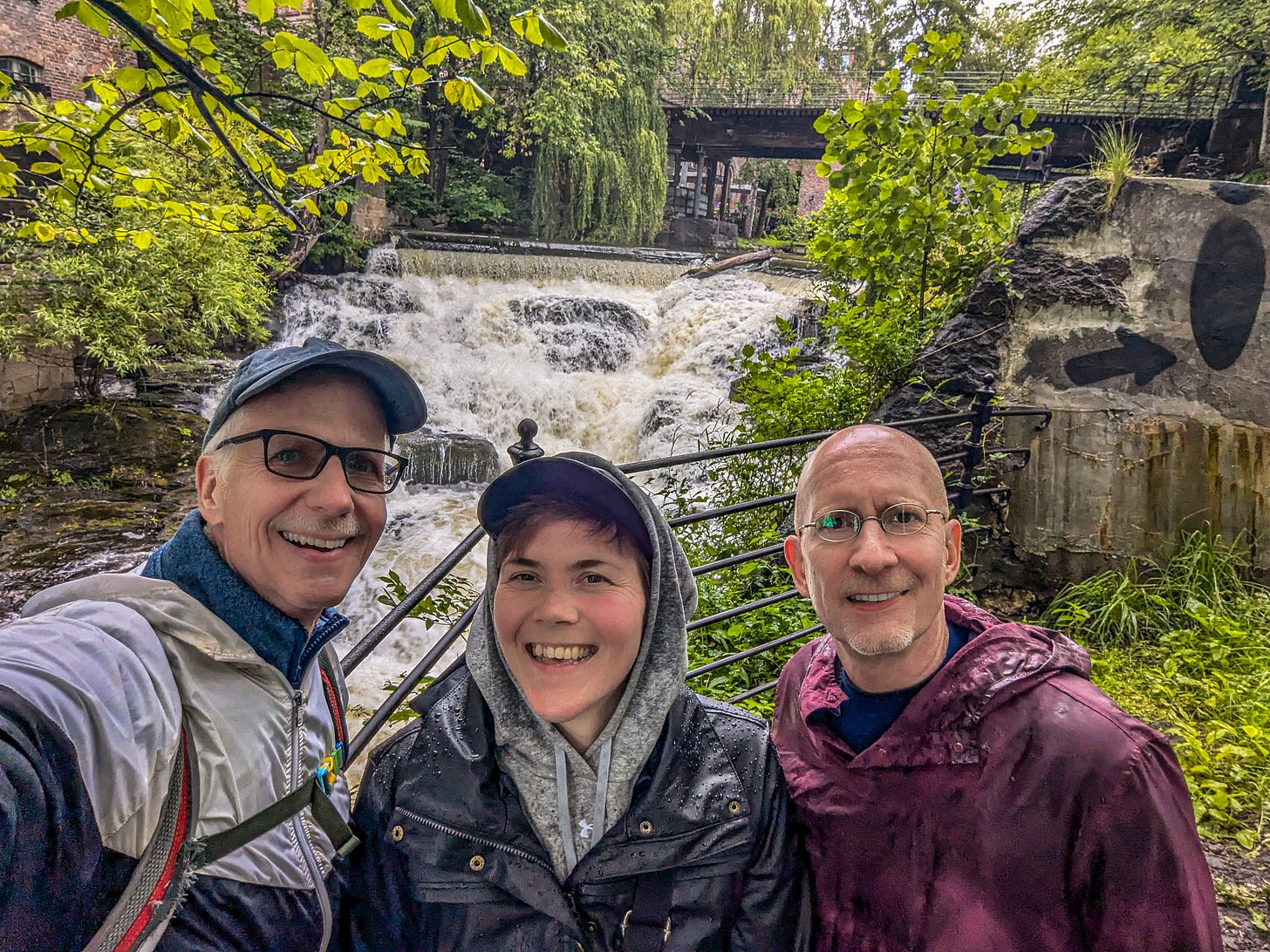The Place We're at Now: Oslo, Norway
I like it a lot. Brent never wants to leave.
This is a regular feature about where we currently are in the world: how we ended up there, what it costs, and exactly what we think.
Brent and I are currently spending four weeks in Oslo, Norway. Ninety-three percent of Norwegians live in the southern part of their country, which is warmer than the north. Twenty-seven percent live in just the Oslo area.
The city’s population is 709,037, with a “greater urban area” of 1.5 million. Technically, residents of Oslo are called “Oslovians” or “Osloites,” but almost no one says this. Instead, they’re just “Norwegians.”
And yes, Oslo sits at the end of one of Norway’s famous fjords — those deep, narrow sea inlets. The country has almost 2000 fjords in all.
Norway is both a Scandinavian country and a Nordic country. What’s the difference?
Norway, Sweden, and Denmark are considered “Scandinavian” because they share a common history, culture, and root language.
But neighboring Finland and Iceland have different languages — and different histories and cultures — so they, along with Norway, Sweden, and Denmark, all make up the “Nordic countries” — from the French word “nordique,” meaning “of the north.”
Here are a few other fun facts about Oslo and Norway:
While Norway is one of the most robust democracies in the world, its correct name is the Kingdom of Norway. Yup, Norway still has a king, and the royal family is one of the most popular in the world, with national support of some 72%. Perhaps that's because the Norwegian monarchy is also one of the “poorest” in the world, worth a total of only $30 million USD.
Oslo was founded in 1040 AD by, yes, the Vikings. After Oslo burned down in 1624, King Christian IV rebuilt and named it after himself: Christiania — later Kristiania. It wasn’t until 1925 that the city returned to its original Norse name, Oslo.

English is a kind of unofficial second language in Norway with about 90% of Norwegians having at least a moderate level of English fluency.
Norway isn’t in the European Union but it is in the “common borders” area known as the Schengen Zone, which limits how long non-EU tourists like us can stay anywhere in the entire Schengen area to 90 days in any 180-day period.
Norwegians are responsible for the existence of salmon sushi. The Japanese — who, of course, first created sushi — thought eating raw salmon sushi was unsafe and disgusting. But in the 1980s, the Norwegians, who had more salmon than they knew what to do with, managed to convince Japan otherwise.

How did we end up here?
Brent and I have long wanted to visit the Nordic Scandinavian the insanely cold countries in Northern Europe.
But we also have a very good former-nomad friend, Marianne, who is Norwegian. Since we’re spending this year in Europe, we decided this was the time to visit her in Oslo.
Everyone has been asking us: “Where else are you going in Norway?”
When we respond, “Nowhere, just Oslo,” people’s eyes bulge.
They say, “But what about the other fjords? And mountains? Are you crazy?”
We are kind of crazy, but we’re also “slomads” — slow travelers. We’re also still working, not retired or on holiday. And, of course, we’re visiting Marianne.
We’d like to stay another few months and travel around, but because of the aforementioned Schengen Zone, we have no more tourist time in Western Europe.
Fortunately, there is a ton to do in and around the city.
But one day, we’ll definitely be back to explore the rest of Norway.
Where are we staying? What does it cost?
We’re staying in Majorstuen, which is an upscale neighborhood just outside the city center, on a major metro line and various tram lines. Marianne strongly recommended it.
Keep reading with a 7-day free trial
Subscribe to Brent and Michael Are Going Places to keep reading this post and get 7 days of free access to the full post archives.




